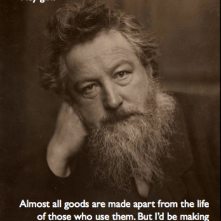In reading for class this week, I wanted to focus my attention on how each of the pieces talked about rhetoric in terms of defining, illustrating, and exercising. This is the first time I have read about/from the sophists, and I was curious about seeking textual indication that would better illustrate this seeming divide.
Plato’s Gorgias
- Socrates makes to Gorgias a distinction between exhibition and answering through speech
- Socrates tells Gorgias to respond in a shorter method; what/why would a shorter or longer method be used? is this distinctive of sophistry and rhetoric in terms of style of delivery?
- Socrates asks “with what is rhetoric concerned?”, to which Gorgias replies “discourse”
- Gorgias calls rhetoric art —”Rhetoric is my art”, to which Socrates questions “Then I am to call you a rhetorician?”
- Socrates asks”To what class of things do the words which rhetoric uses relate?”, to which Gorgias replies “To the greatest, Socrates, and the best of human things”
- Gorgias views rhetoric as the artificer of persuasion, “persuasion is the chief end of rhetoric”
- Socrates makes a point to ask Gorgias to distinguish the distinction/complication made between having learned and having believed
- Gorgias views rhetoric as competitive art and that it should be used like any other competitive art; power and nature of the art of rhetoric is to speak persuasively to the multitude on any subject
- Socrates states that Gorgias gains the ears of the multitude by persuasion, not instruction
- Socrates defines rhetoric not as an art, but an experience. He states that it has been made into an art.
- I’m still sifting through this distinction Socrates makes for Gorgias about cookery and medicine:
- “And now I will endeavour to explain to you more clearly what I mean: The soul and body being two, have two arts corresponding to them: there is the art of politics attending on the soul; and another art attending on the body, of which I know no single name, but which may be described as having two divisions, one of them gymnastic, and the other medicine.”
- He lays out the following:
- astiring : gymnastic :: cookery : medicine; or rather,
- astiring : gymnastic :: sophistry : legislation; and
- as cookery : medicine :: rhetoric : justice
And this, I say, is the natural difference between the rhetorician and the sophist, but by reason of their near connection, they are apt to be jumbled up together; neither do they know what to make of themselves, nor do other men know what to make of them. For if the body presided over itself, and were not under the guidance of the soul, and the soul did not discern and discriminate between cookery and medicine, but the body was made the judge of them, and the rule of judgment was the bodily delight which was given by them, then the word of Anaxagoras, that word with which you, friend Polus, are so well acquainted, would prevail far and wide: “Chaos” would come again, and cookery, health, and medicine would mingle in an indiscriminate mass. And now I have told you my notion of rhetoric, which is, in relation to the soul, what cookery is to the body.
- discussion of justice and injustice, good and evil—good as just, evil as unjust
- does this exchange bring to light, as it seems to, differences in instructional method between the sophists and the rhetoricians? how does method affect outcome? affect purpose (when they are dealing with the same citizen population and spaces for speech)?
Gorgias’ Encomium of Helen
- introduction highlights Gorgias’ style as “overly antithetical and symmetrical in structure and overly alliterative and assonant in sound”; rhetoric described as providing a magical experience akin to poetry performance, which warrants attention to manipulative effects
- knowledge is provisional based on shared experiences that rely on shared deception effected by knowledge; denies existence of transcendent essences of situation
- rhetoric must appeal to the whole person
- goal: wishes to “free the accused of blame, and having proved the truth, to free her from their ignorance”
- setting forth the causes by which Helen was taken to Troy
- predetermined by the god’s; blame is on Fate and on a god
- raped by violence; the undertaker did the dread deeds so he is to be hated and she pitied
- persuaded by speech and deceived her heart, “Speech is a powerful lord, which by means of the finest and most invisible body effects the divinest works”; speech constrained the soul and the persuader does the wrong and the persuaded is wrongly charged
- persuaded by speech but was unfortunate as fear/grief lead to the lost presence of mind; sight was delighted to love and desire—an affliction
- ends: “I have by means of speech removed disgrace from a woman”
- how would a rhetorician account for the situation of Helen’s journey to Troy differently?
Dissoi Logoi
- structured in terms of five sets of opposing arguments: good|bad; seemly|shameful; just|unjust; truth|falsehood; untitled: sane|demented and wise|ignorant
- final three sections investigate: whether wisdom and moral excellence can be taught; whether political offices should be assigned; and what qualities a rhetorician should have and how his memory should be trained
- theme: what good government is and how discourse can maintain it
- advocates a situational ethics—qualities exist independent of the situation
- emphasizes individual’s perspective as determining the value of an object, experience, or act
- how does this compare/contrast with Aristotle’s points in On Rhetoric?
- at its core, what is distinctly characteristic of the sophists in this text?


